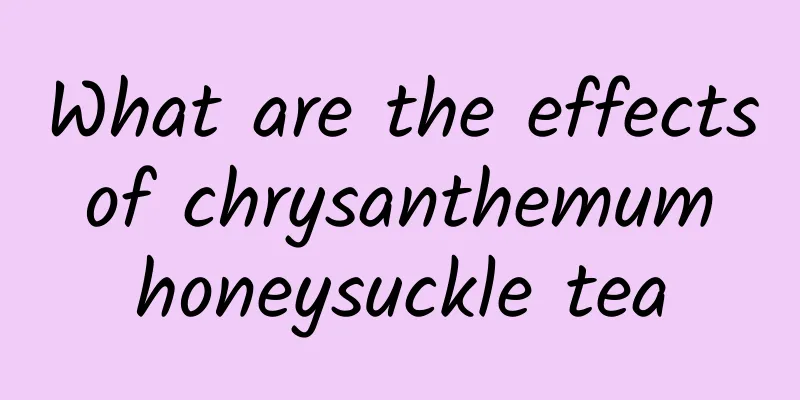The efficacy and function of Huanglongteng

|
Huanglong vine is a traditional Chinese medicinal material. There are precedents of using Huanglong vine to treat diseases in ancient times, so we can eat it with confidence. Next, I will mainly introduce to you the effects of Huanglongteng. [Other names] Five-spice vine, ventilation incense, iron bone powder, small blood vine, snake venom medicine, detoxification powder, small red robe, rock green leaf, big red robe, mountain incense, slippery vine, purple dragon, blood vine, five sand vine [Source] Medicinal material source: The vines and roots of Schisandra chinensis, a plant of the Schisandraceae family. [Original form] Deciduous woody vine, the whole plant is glabrous. The branches of the current year are brown. Simple leaves are alternate, leathery; petiole 1-1.5cm long; leaf blade ovate, oblong-ovate or narrowly oblong-ovate, 7-11(-17)cm long, 2-3.5(-5)cm wide, apex acuminate or caudate-acuminate, base obtuse and extending down to petiole, brown above when dry, pale below, sparsely glandular or sometimes entire, lateral veins 4-8 pairs, reticulate veins sparse. Flowers are unisexual and dioecious; flowers are orange-yellow, 1.5 cm in diameter, solitary or 2-3 in clusters in leaf axils; perianth is 9(-15), the outer 3 are green, the inner is orange-red; the stamens are united into a spherical fleshy receptacle, about 6 mm in diameter, with 9-12 stamens, each stamen is clamped into the transverse slit of the fleshy receptacle, without filaments, and the ventricle is longitudinally split inward; the pistil is spherical, 4-6 mm in diameter, with 25-45 carpels, obovate. The aggregate fruit is about 15 cm long, and the small berries are nearly spherical and scarlet when ripe. The seeds are nearly spherical or ellipsoidal, flat on both sides, and have a smooth seed coat. The flowering period is June-July, and the fruiting period is November. [Habitat distribution] Ecological environment: Growing in mountain valley broad-leaved forests at 2000-3200m. 【Chemical composition】 Contains anwuweizonic acid and manwuweizic acid. [Pharmacological action] The succinic acid contained in Huanglongteng has an inhibitory effect on Lewis lung cancer, brain tumor-22 and liver tumor in mice, but has no cytotoxic effect in vitro. 【Nature and flavor】 Bitter; Pungent; Neutral 【Meridian】 Liver meridian 【Functions and indications】 Clears away heat and detoxifies; promotes blood circulation and reduces swelling. Mainstream cold; carbuncle, ulcer, poisonous snake bite; rheumatism and numbness; traumatic injury; irregular menstruation [Usage and Dosage] For oral use: decoct in water, 10-20g; or soak in wine. For external use: take appropriate amount and mash it for application; or grind it into powder and sprinkle it on the affected area. 【Excerpt】 Chinese Materia Medica The above is an introduction to the Chinese medicinal herb Huanglongteng. For medicinal herbs that we don't understand, we should learn more about them so that we can make full use of them in our lives and not be at a loss. |
<<: The efficacy and function of red sow vine
>>: The efficacy and function of Huanglong vine leaves
Recommend
Why do I feel so tired even though I just sit all day at work?
Everyone has probably experienced this moment at ...
Canada goldenrod is being hunted down by the entire Internet again? Not unfair! Report it immediately if you see it
Attention! Attention! It is the flowering season ...
The most tricky kind of meat in supermarkets, I don't recommend buying it, it's a waste of money
In the past two years, the price of pork was rela...
The efficacy and function of Qianjinzhui [picture]
The traditional Chinese medicine Qianjinzhui [pic...
Teachers’ Day is here again. Why do people like to wish teachers “have many students all over the world”?
Respecting teachers is a traditional virtue of th...
The efficacy and function of holly
Holly is commonly used as a medicinal ingredient ...
When swimming, never wear white and blue swimsuits, it is really dangerous!
Summer is here, and many people may be eager to j...
Where on Earth can you see the clearest starry sky?
Author: Xingliang (University of Chinese Academy ...
The efficacy and function of leather whistle
In daily life, people are not only very familiar ...
What are the effects and functions of white aconite?
White aconite is a widely used Chinese medicinal ...
Global recall! Already sold to China, the General Administration of Customs reminds: Do not eat!
Expert of this article: Wang Xiaohuan, Doctor of ...
What are the effects and functions of dried deer antler and how to eat it?
Deer antler is a tonic with excellent nourishing ...
The efficacy and function of Chinese medicine Gardenia
Gardenia is a relatively common plant that can be...









